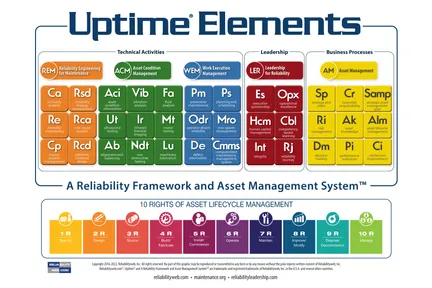
Are you drowning in the many activities related to what to do in your asset management program? Are you spending valuable resources and little very few short-term results? Are you tired of paying large sums of money to consultants and software vendors?
History Driven by Finance and Accounting
Organizations have used and managed their assets to deliver value and achieve their goals for hundreds of years. Every organization determines what it considers value to be and chooses how to derive the best total value.
The formal practice of asset management has become more explicit over the past 40 years. Globally, in the 1980s, an oil and gas crisis in the United Kingdom and service failures in the public sector drove an outcry for more accountability. In the 1990s, asset management gained traction through government accounting standards.
Modern asset management is foundationally concerned with accountability and compliance.
Lifecycle Means Engineering, Operations, and Maintenance
The conundrum in asset management is that lifecycle value is predominately in the hands of engineering, maintenance, and operations. The voice of the customer, including reliability, quality, and safety, take first priority. Accountability and compliance are part of the equation but only part of it.
Said another way, engineering is responsible for making sure we have the right tool (asset) for the job (producing value for the organization). Maintenance is responsible for keeping the tool functioning the way engineering designed it. Operations is responsible for using the tool in a manner to produce the desired value without pre-maturely running it into the ground.
The accountability and compliance functions do little to produce value, except for the tracking and feedback that those functions provide.
Operationalizing Asset Management is Challenging
The Institute of Asset Management (IAM) Anatomy demonstrates how challenging asset management can be. In the IAM Anatomy, there are 39 “landscape” subjects and six subject categories. These cover the entire spectrum of organizational management with the intent of creating an asset management culture.
IAM has gone a step further in developing Subject Specific Guidelines for each subject within the anatomy, including integrating the Maintenance and Operations Guidelines.
Few entities have the organizational capacity to re-tool their processes from the top down to match the desired language and methodology of formal asset management.
On the other hand, organizations like Reliabilityweb.com have developed their own anatomies for delivering value from assets, albeit with a more bottom-up approach. The Uptime Elements (the Uptime Elements for Reliability and Asset Management) include 36 elements in five categories.

So, is it 39 elements in 6 categories or 36 elements in 5 categories?
The short answer is neither. Both anatomies are forms of multidimensional performance models (MDPMs). MDPMs are based on expert opinion and what leading organizations do to drive performance. MDPMs tend to borrow from each other and change over time.
The fact that frameworks evolve over time means that no one system has determined a singular, best path. In turn, that means following any one model does not guarantee success.
A Straightforward Solution
Mount Pleasant Waterworks (MPW) in South Carolina has an asset management program that dates back 20 years. There have been at least four major issues and revisions to their approach. Like many organizations, MPW has often struggled with the depth and breadth of asset management when aligning with its total staff of 150 people.
Operationalizing asset management has been the key. Several key aspects include:
Trusting their overall management system and fitting asset management into it.
Building implementation schedules focused on organizational capacity rather than timelines to advance the collective asset management program in 3 or 5 years.
Identifying aspects in operations, maintenance, engineering, finance, technology, and human resources, and then exploring how asset management could help improve those processes (rather than having the asset management “book” attempt to drive change).
Fewer asset management committees and creating more time for staff to get the real improvements done.
Monthly active involvement by all department managers related to what improvements they needed to get done for the organization, not just for an asset management system.
Asset management continues to provide high value to MPW because it addresses the operational needs of the organization instead of the organization chasing the theoretical needs of asset management.
Moving Forward
Every management system takes years to implement, with peaks and valleys along the way.
And that is the larger point. There are many management systems that an organization can follow. Any and all must fit into a regularly evolving organizational context.
Operationalizing asset management is all about determining what you need first and then determining how asset management can help rather than fitting the organization into an asset management template. Ask not what you can do for asset management but what asset management can do for you.
JD Solomon Inc provides asset management, facilitation, and program development services at the nexus of facilities, infrastructure, and the natural environment. JD served as the international project manager for the IAM's Maintenance Delivery and Asset Operations SSG. Contact us for more information on right-sizing your approach to asset management. Improve the communication of the value of asset management by visiting Communicating with FINESSE.


